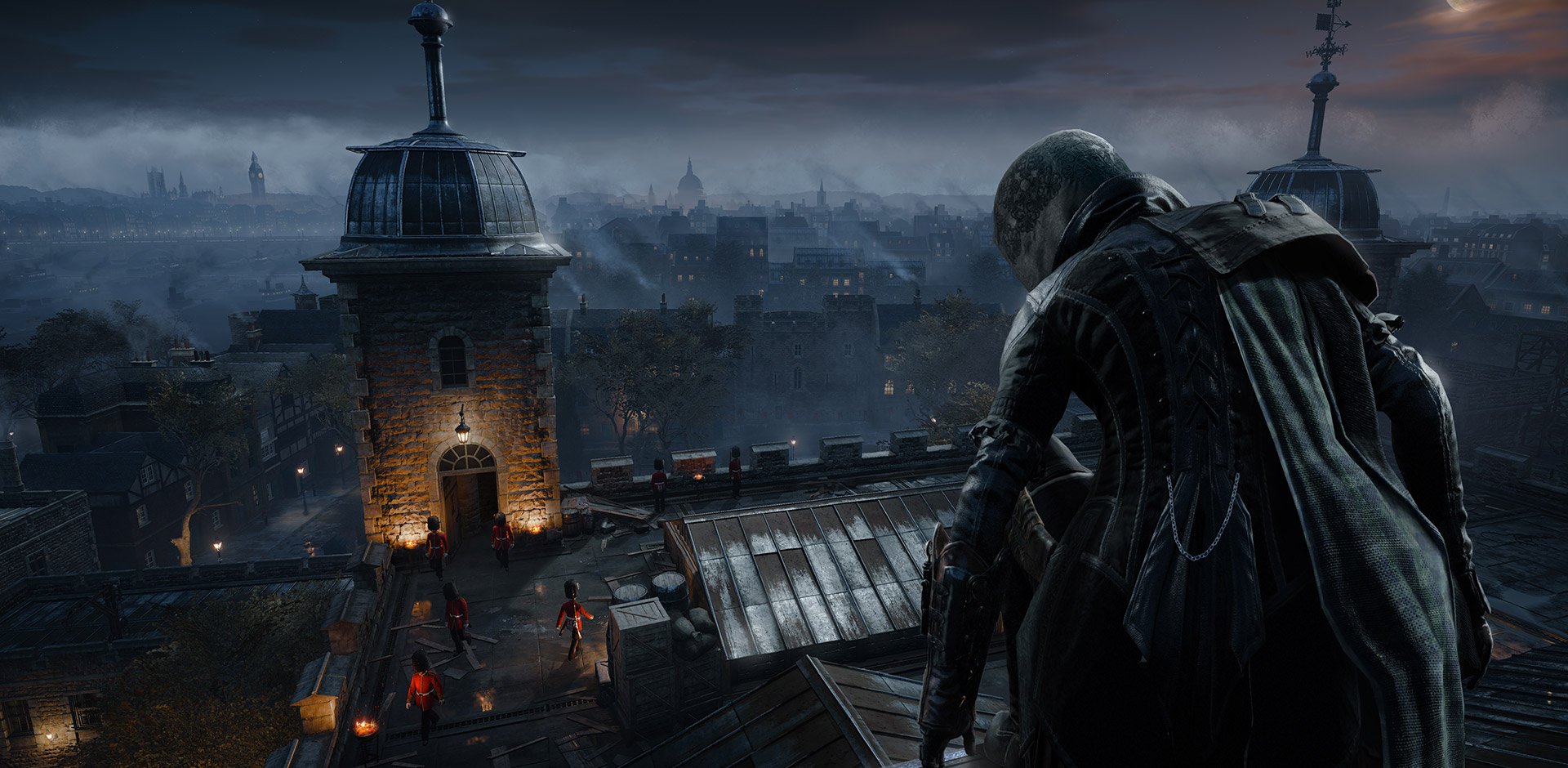The Assassin’s Creed franchise has no shortage of beautifully crafted historical playgrounds for its fans to enjoy exploring. From the narrow streets of Florence and Venice in Assassin’s Creed II to the sprawling landscapes of Ancient Greece in Assassin’s Creed Odyssey, the series has always impressed me with its outstanding attention to historical detail in world design. Sure, it’s all a fiction. However, there’s no denying that the best Assassin’s Creed games feel like taking a trip back in time.
In this ranking, I’ll be discussing how well Ubisoft has adapted the time period and location of each Assassin’s Creed game to support open exploration, enjoyable gameplay, and historical immersion. This adaptation process is a key part of what makes the best Assassin’s Creed games so great.
13. Colonial America in Assassin’s Creed Rogue

Assassin’s Creed Rogue is the lowest on this list because it’s the only game in the franchise where it feels like significant historical details are missing in the game world’s creation. The focus era of the game is the Seven Years’ War, but the game has little to do with the conflict. The River Valley area of the map is a bit too shallow in terms of side quests and other explorative activities, and the ability to sail a full-sized pirate ship around central New York is somewhat comical.
12. Viking-era England in Assassin’s Creed Valhalla
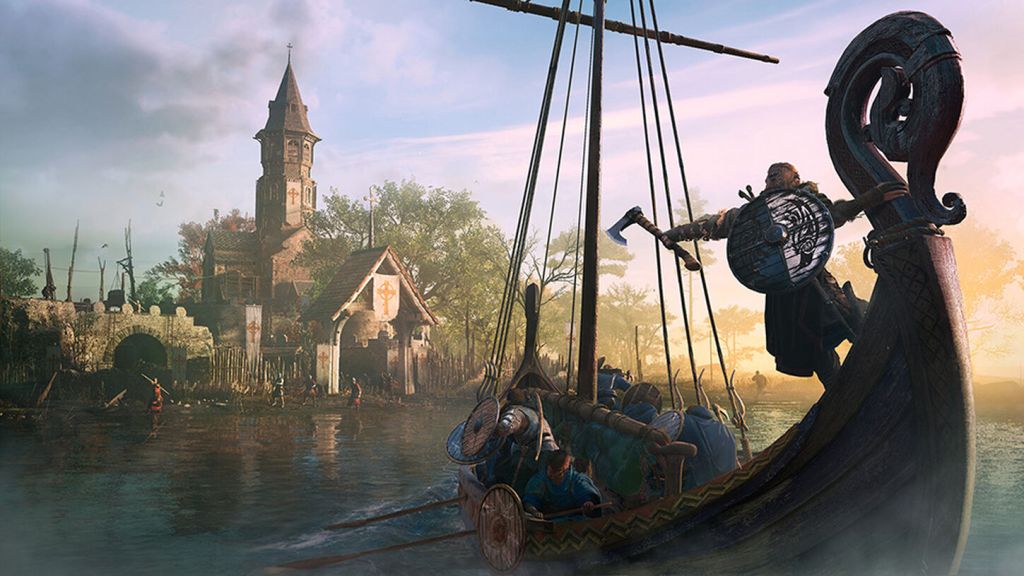
Valhalla is the franchise’s biggest land map to date, taking players from the fjords of Norway through to a vast recreation of Viking-era England. DLC expansions to the game also allow you to travel to Ireland, France, and other more mythological lands, such as Asgard. However, the expansiveness of the Valhalla is its main detriment, particularly in the game’s England maps. The series’ iconic parkour mechanics are limited in nearly every zone, and many of the game’s towns and villages feel unremarkable because there’s very little to see or do in these locations that you can’t do in other corners of the map.
11. Constantinople in Assassin’s Creed Revelations
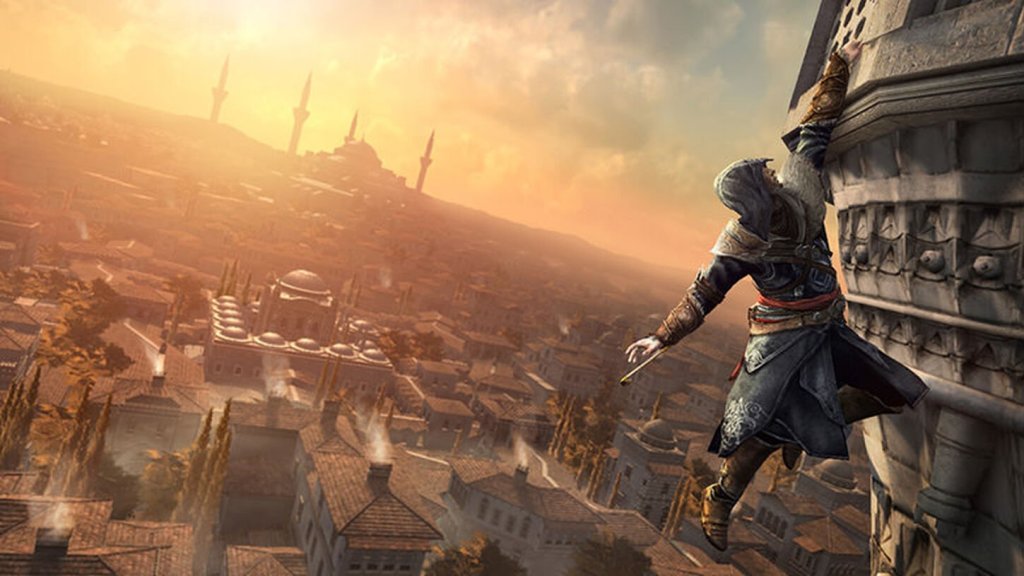
Ubisoft’s rendition of 1500s Constantinople in Revelations is a less intriguing landscape in comparison with other game worlds from the series, primarily because the city’s districts lack distinction from one another. There are of course many iconic landmarks sprinkled across the map, such as the Hagia Sofia and Galata Tower, but the story doesn’t interact with them very often which means you can easily miss them. On the plus side, traversing the map can be very enjoyable, with additions such as the hook blade and zip lines improving the parkour experience from earlier titles.
10. The Holy Land in Assassin’s Creed

The original Assassin’s Creed is an incredibly atmospheric experience. The division of each city between richer and poorer districts nicely complements the themes of the story when it dives into the philosophical elements of the creed. However, there’s no denying that the first game has not aged nearly as well as its sequels. There are no side quests that help players engage with the history of this era, and the Kingdom area between the three cities is unremarkable. I’ll always be holding out hope for an Assassin’s Creed remaster that fixes these issues, but in the meantime, the world of the original game is decent enough.
9. Rome in Assassin’s Creed Brotherhood
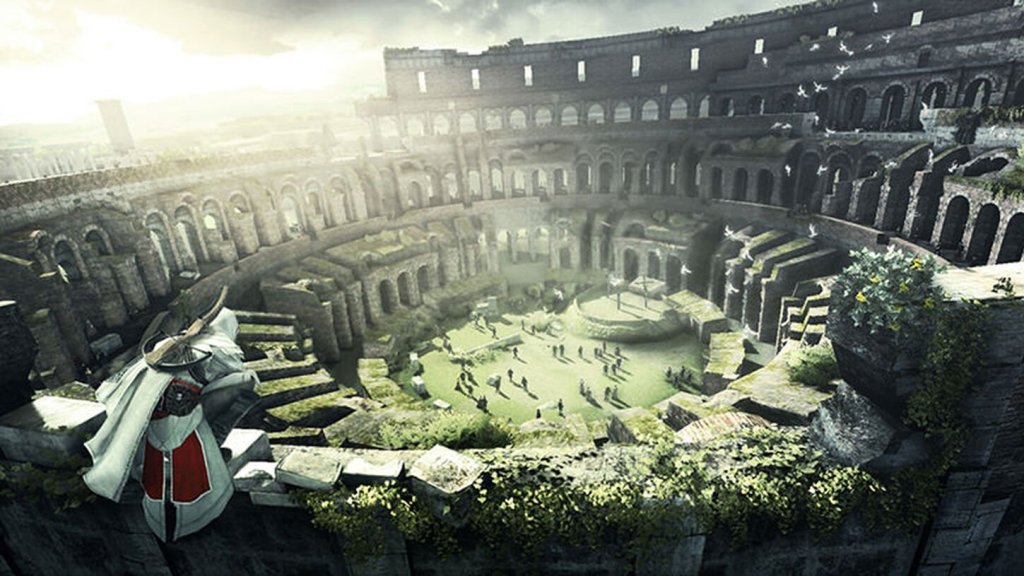
Assassin’s Creed Brotherhood is the middle chapter in the trilogy of games covering the series’ most beloved protagonist, Ezio Auditore, and his adventures through Renaissance Italy. As a result of the storytelling, many aspects of the setting are borrowed from the previous entry, Assassin’s Creed II. The signature monuments of Brotherhood’s Rome, such as the Colosseum and Castello Sant’Angelo, are well utilized in the game’s storytelling, but many of the outlying areas of the game felt unimpressive, particularly compared to the countryside in Assassin’s Creed II. The core of the city, however, is excellently crafted and highly interactive.
8. Ancient Greece in Assassin’s Creed Odyssey
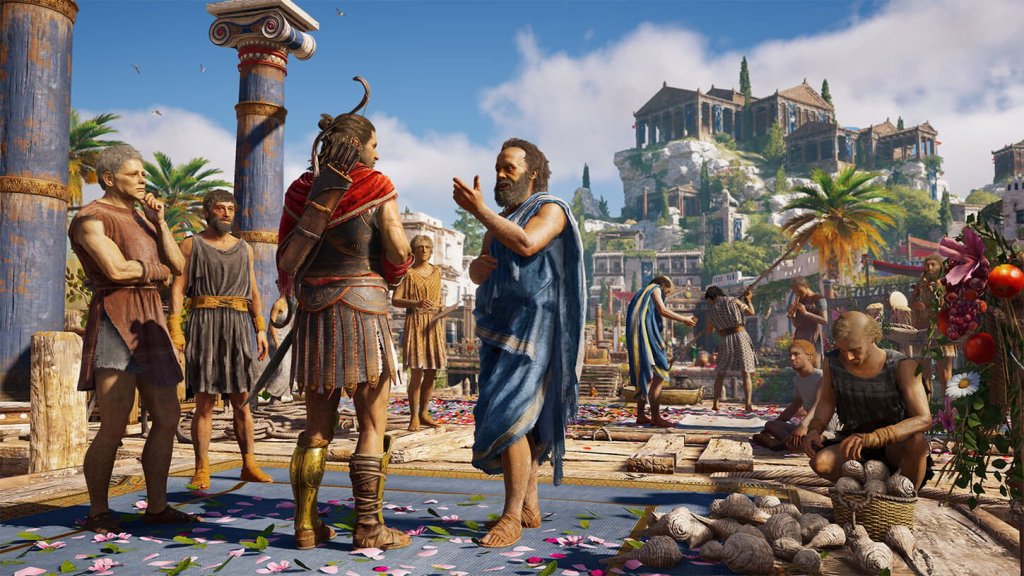
Like Assassin’s Creed Valhalla, Odyssey’s maps and open landscapes are massive. However, the game’s regions are more distinct than those found in Valhalla, and offer unique vistas and lively historical settings that constantly had me snapping screenshots. But while the game’s Mediterranean setting is undeniably beautiful throughout, there is sometimes a lack of interactivity in the landscape. In short, not all regions felt relevant to the quests. Parkour opportunities felt limited, and you’ll traverse most of the map by boat or on horseback.
7. Revolutionary America in Assassin’s Creed III

Assassin’s Creed III centers its gameplay on revolutionary war America and divides its players’ time between the colonial cities of Boston and New York and the frontier wilderness. Each of the game’s regions change with the season appropriate to the main story, and weather mechanics such as snow banks appropriately shift the ease of traversal and visibility. The key battlegrounds and buildings from the Revolutionary War are more than just sights to visit. Instead, they play central roles in the game’s story.
6. Baghdad in Assassin’s Creed Mirage

The most recent game in the Assassin’s Creed franchise returned players to a more linear game experience, where story and stealth take center stage and were well supported by the game’s environment. The city streets of Mirage’s Baghdad are lively, colourful, and filled to the brim with iconic landmarks. The ability to blend in with the crowds makes a welcome return, and the architectural designs of the buildings made parkour enjoyable once again. I was also particularly enchanted by the game’s interior spaces, but found the desert beyond the city to be a bit too empty.
5. Ancient Egypt in Assassin’s Creed Origins

Origins is the first of the three RPG- style games in the Assassin’s Creed franchise, and thus was the first to design its game map for full open-ended exploration. Ptolemaic Ancient Egypt was a significant departure from the historical backdrops of the preceding games, almost all of which were set within 500 years of modern day. The new surroundings of Origins undoubtedly helped to keep the franchise feel fresh and exciting, and new mechanics like diving and the Discovery Tour also gave us new ways to explore every nook and cranny.
4. The West Indies in Assassin’s Creed IV: Black Flag

The golden age of piracy is one of the most iconic historical time periods in the franchise, and the world design of Black Flag does not disappoint in bringing this era to life. Capturing forts, digging up buried treasure in underwater shipwrecks, and uncovering Mayan ruins are all unique activities that allow players to directly interact with the setting. Vibrant jungles, unique cities, and changes in the ocean environment when sailing all assemble to create a fun and entertaining adventure.
3. Victorian London in Assassin’s Creed Syndicate

With the addition of the rope launcher and carriage driving, Syndicate’s rendition of Victorian London offered us a fantastic blend of new mechanics for exploring the city’s wider streets, bridges, and rivers. Iconic buildings such as Big Ben and Westminster are present, but the narrow streets and alleyways of Whitechapel and Southwark are arguably even more interesting in terms of exploration. City districts are distinct, and small details on the street, such as posters and signs, give the game an impressive amount of gritty yet enjoyably goofy Victorian style.
2. Renaissance Italy in Assassin’s Creed II

Renaissance Italy is one of the most beloved settings in the entire Assassin’s Creed catalog, and for good reason. The importance of this era in Italian history is incredibly well explored in both the story and interactions with characters like Leonardo Da Vinci and Machiavelli. Florence and Venice are distinctly beautiful, suit the protagonist’s parkour movements perfectly, and leave a lasting impression on the player. The game of course greatly benefits from Jesper Kyd’s now iconic soundtrack. It gives the world of Assassin’s Creed II a level of mystique that inspired me to explore every corner in search of satisfying scraps of franchise lore.
1. Revolutionary Paris in Assassin’s Creed Unity

Assassin’s Creed Unity perfectly captures France in the early throes of Napoleonic-era revolution. The dense crowds of NPCs in the game bring the city to life in a way that the franchise has yet to match and establish the chaos of the times in a very interactive way. Details as unmissable as the riots going on in the streets and as small as the newspaper clippings available on street corners made me feel as though I was walking around in nothing short of a turning point in human history.
The ability to not only climb but seamlessly enter and explore iconic landmarks such as the Notre Dame, Palace of Versailles, and the Bastille was also an outstanding upgrade from earlier entries. While there have been many Assassin’s Creed games since Unity, they haven’t risen as high in terms of historical world design and immersion.
